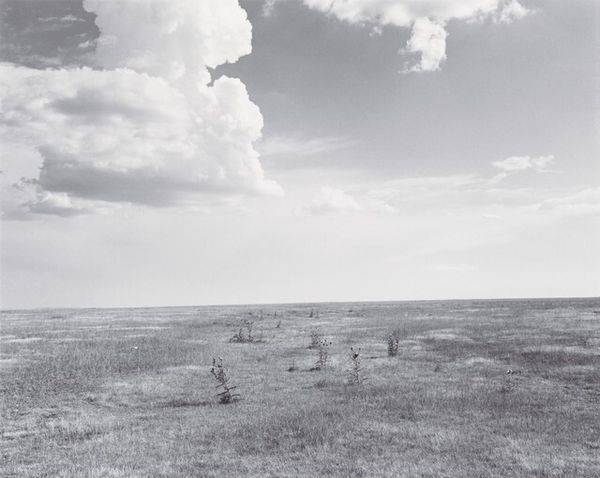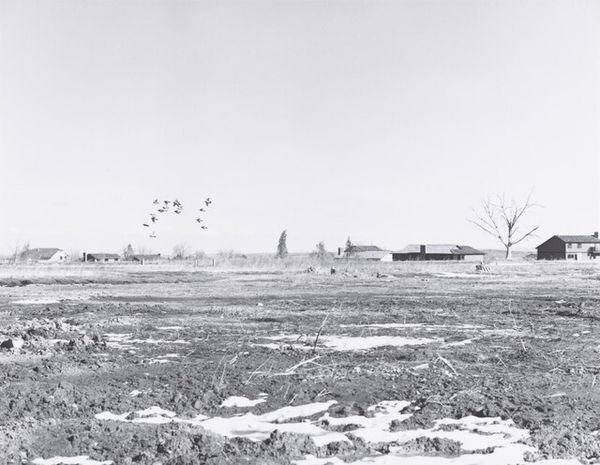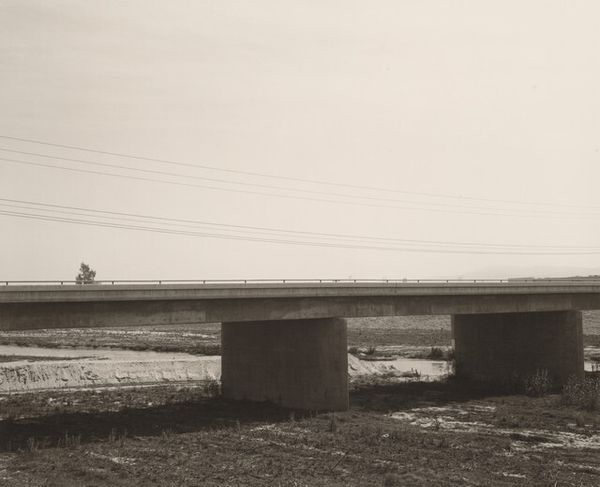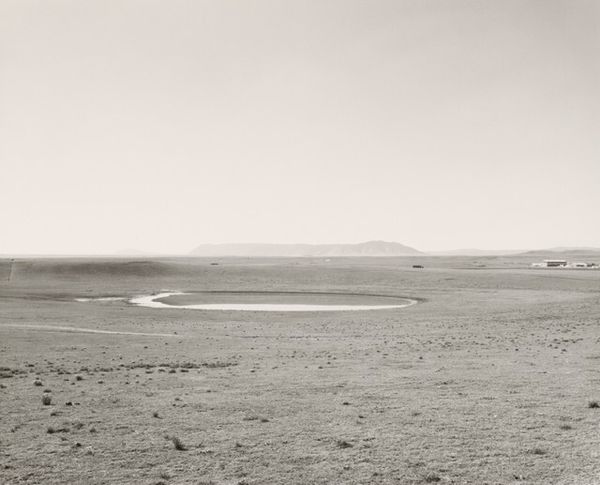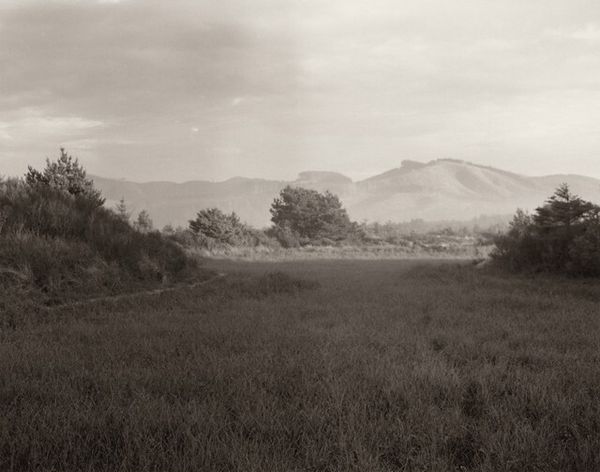
photography
#
photorealism
#
black and white photography
#
landscape
#
street-photography
#
photography
#
black and white
#
monochrome photography
#
monochrome
#
monochrome
Dimensions: image: 15.1 × 19.3 cm (5 15/16 × 7 5/8 in.) sheet: 27.9 × 35.5 cm (11 × 14 in.)
Copyright: National Gallery of Art: CC0 1.0
Curator: Looking at this photograph, "Longmont, Colorado," by Robert Adams, potentially taken between 1973 and 1988, what springs to mind? Editor: Stark, lonely, and kind of… ominous? The monochrome emphasizes the harsh angles of those cookie-cutter houses, almost like teeth on the horizon. That solitary tree, trying to soften the landscape, feels almost defiant. Curator: Adams is well known for his exploration of the American West and the impact of development on the landscape. This image exemplifies that. Notice how the composition is divided—the man-made structures versus the seemingly natural, yet equally scarred, foreground. Editor: It’s the "scarred" that gets me. The raw earth and construction debris feel… violated. And the way the light bleaches everything out makes it feel like a scene from a bleak, existential western. Is this progress, or slow violence against the land? Curator: The choice of black and white photography is crucial. It strips away the color, forcing us to focus on the forms, the light, and the textures, and how those things have a specific context in terms of social spaces in Colorado during its mid-late century economic and population booms. This lack of romanticism can make it difficult to grasp the work, yet these visual details add gravity. Adams was invested in moving past what he saw as easy tropes. Editor: Absolutely. A glossy, color postcard would just sanitize the whole thing. This, however, is raw and unflinching. It's holding up a mirror to our own unsustainable expansion and consumption. You know, it reminds me of something Edward Hopper would have photographed if he'd been handed a camera and a plot of land in Colorado. Curator: It’s a strong parallel, the exploration of alienation and isolation, though through distinctly American iconography. It forces us to contemplate our relationship with nature and questions the idea of a pristine, untouched landscape that likely never existed in the first place. What narratives do we repeat to give us permission for urban expansion? What values are implicit? Editor: It feels prophetic. We look back now, knowing what sprawling development did to so many landscapes. It is hard to feel optimistic looking at this photo. Yet that's part of its strength; it holds space for mourning. Curator: Indeed, it asks us to remember and question. Hopefully it allows us to look for other possible trajectories for our future. Editor: A visual cautionary tale then, served with a heavy dose of desolate beauty. I'll be thinking about that tree for a while.
Comments
No comments
Be the first to comment and join the conversation on the ultimate creative platform.
